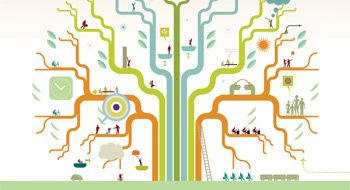

This is Part 1 of our 7th annual survey of CAP members. Read Part 2, Part 3 and Part 4.
Retirement is often portrayed as a time to relax and enjoy the remaining years of our lives. But the majority of employees don’t seem to view the future in such rosy terms.
In fact, this year’s CAP Member Survey shows that 60% of plan participants do not feel financially prepared for retirement.
Despite the concern, most plan members aren’t taking action to address the issue. Those with a formal, written financial plan that outlines at what age they will retire and the amount of money they will need to retire by that age dropped from a high of 46% in 2007 to only 21% in 2012. And, although the average employee contribution to employer-sponsored retirement plans inched up to 5.2% in 2012, it’s still a far cry from the 7.3% reported in 2007.
“Research shows that few members have a financial plan and CAP members’ contributions have declined significantly, although six in 10 (58%) members view their CAP as their primary source of retirement income,” says Nancy McIntosh, assistant vice-president, asset retention and service, at Great-West Life. “Sponsors can help members develop realistic assumptions by promoting the online planning tools available, enabling members to envision retirement, calculate
and select investments that match their risk profile and goals and by providing advice.”
Other findings contradict members’ dim view of their retirement finances: 77% of plan participants are satisfied with their employee retirement plan (compared with 82% in 2011), 65% are satisfied with the performance of their investments in their employee retirement plan (versus 78%), 60% are confident that their CAP will provide the amount of money they expect from them in order to meet their financial objectives for retirement, and 55% believe they are currently on track to meet their targets for the amount of money they need to save for retirement.
“The majority of employees have unrealistic expectations,” notes Lynda Naud, pension and benefits manager with JTI-Macdonald. “On average, we see that people expect to put aside $712,000 and receive $70,000 annually from their plan. Do they realize that this amount will not cover $70,000 in future income? There is a bit of a disconnect, and I feel that it is really important that we offer members assistance with financial planning so that they can build a realistic retirement plan. This may lead them to save more, spend less and maybe work longer.”
Anna Del Balso, associate vice-president, research and intelligence, with Standard Life, however, thinks that employees are actually more realistic about their retirement expectations since the financial crisis of 2008. Back in 2007, survey respondents with a written financial plan expected to retire at 59.4 years old with $2,832,262 saved. Those numbers changed considerably this year, with the average age of retirement pegged at 62.3 years old and savings at $712,782.
But Del Balso is concerned that members’ confidence and satisfaction declined this year. “We need to find a way to rebuild confidence and develop services to help employees reach realistic milestone goals,” she says. “Plan sponsors can facilitate retirement planning, especially in key segments of the workforce such as women and people approaching retirement who have a greater need for this service. As well, design features such as auto-escalation and auto-enrollment can help ensure that all these people are started on the right path.”
With so many people still unprepared for retirement, plan sponsors and providers need to realize that there is only so far they can go using conventional methods of communication, adds Colin Ripsman, a senior consultant with Eckler Ltd. “You have to try to move that needle by making available capabilities to help people build their own financial plans and find ways to drive people to online tools. But you also have to recognize that there are going to be some people who you aren’t going to be able to reach no matter what you do.”
